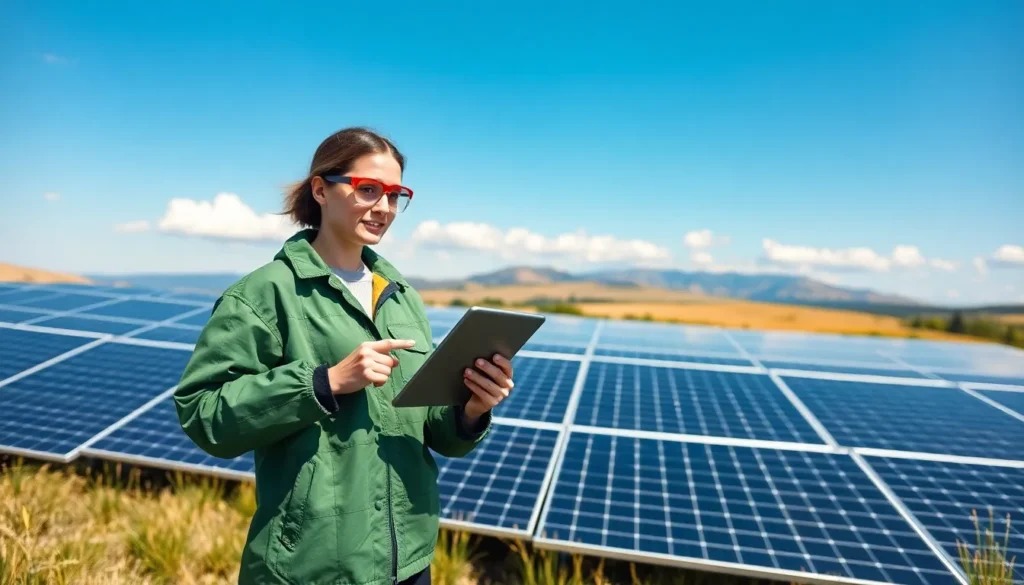In an age where energy efficiency and sustainability are paramount, understanding power retention has never been more critical. Power retention refers to the ability of an energy system to hold onto energy and reduce losses during storage and transmission. As global demand for energy increases, optimizing power retention can lead to more reliable systems and lower costs. This article explores the fundamental aspects of power retention, its significance in energy systems, and the various factors and methods that contribute to enhancing energy efficiency.
Table of Contents
ToggleWhat Is Power Retention?

Power retention is a term that describes the capability of an energy system to preserve energy over a period of time while minimizing losses. This can apply to various forms of energy, including electrical, thermal, and chemical. Simply put, it involves maintaining the energy produced or stored in a system, ensuring it can be utilized effectively when needed. In energy storage solutions like batteries, power retention can also refer to the duration that energy can be held before it begins to degrade or dissipate.
In technical terms, power retention involves various factors, including charge maintenance in batteries, thermal insulation in heat storage systems, and the integrity of energy transmission lines to limit loss. The essence of power retention is not just in the accumulation of energy but also in its protection against loss due to inefficiencies or external factors.
The Importance Of Power Retention In Energy Systems
Power retention plays a pivotal role in the efficiency of energy systems. As the world increasingly turns to renewable sources of energy, such as solar and wind, the ability to store power effectively becomes integral to balancing supply and demand. For instance, solar panels generate electricity during the day: but, energy demand often peaks in the evening. Implementing systems with robust power retention capabilities allows for the smooth transition of energy from production to consumption, reducing reliance on fossil fuel backup sources.
Besides, efficient power retention can significantly lower operational costs for businesses and households. By minimizing energy losses during storage and transmission, organizations can save on energy bills while also promoting sustainability. Globally, as governments push for cleaner energy solutions through incentives and regulations, power retention will become a focal point in achieving energy independence and resilience.
Factors Affecting Power Retention
Several factors influence power retention across different energy systems. Understanding these variables helps in developing better solutions for maintaining energy efficiency.
1. **Material Quality: **
The materials used in energy storage systems, such as batteries, play a significant role in power retention. High-quality materials lead to better charge capacity and lower degradation rates. Inadequate materials may result in increased energy losses.
2. **Temperature: **
Temperature fluctuations can severely affect power retention, especially in batteries. High temperatures can accelerate chemical reactions that lead to energy loss, while extremely low temperatures can hinder the battery’s ability to perform optimally.
3. **System Design: **
The architectural design of energy systems significantly influences how well they retain power. Efficient layouts, including optimal placement of insulation, can minimize heat loss in thermal storage systems.
4. **Usage Patterns: **
How and when energy is used also affects retention. Systems that experience peak usage during off-peak generation times will require more advanced solutions to store and retain energy efficiently.
Methods To Improve Power Retention
Improving power retention is a goal shared by many sectors in energy production and storage. Here are some methods to enhance this crucial aspect:
1. **Advanced Battery Technologies: **
Innovations in battery technologies, such as lithium-silicon or solid-state batteries, promise improved energy density and retention capabilities. These advancements could lead to longer-lasting batteries with minimal energy loss.
2. **Thermal Storage Solutions: **
Implementing thermal energy storage systems, like molten salt storage in solar plants, can effectively retain heat generated during peak sun hours for use when the sun isn’t shining. This approach not only enhances power retention but also maximizes the efficacy of solar energy systems.
3. **Enhanced Insulation: **
For thermal systems, upgrading insulation materials can drastically reduce heat loss. Using improved materials such as aerogels can enhance retention efficiency.
4. **Smart Grids: **
Integrating smart grid technologies allows for real-time data tracking on energy production and consumption, which can predict demand more accurately and optimize energy storage processes.
Applications Of Power Retention Technologies
Power retention technologies are applied across various sectors, demonstrating their versatility and importance:
1. **Renewable Energy Storage: **
Batteries and other storage systems are essential in integrating renewable sources into the energy grid. They allow for the capture and retention of excess energy, enabling a more balanced distribution.
2. **Electric Vehicles (EVs): **
Power retention technologies in EV batteries are critical for extending range and improving charging efficiency. Advances in battery management systems enhance the lifespan and performance of these vehicles by reducing energy waste.
3. **Industrial Applications: **
In manufacturing, power retention methods can drastically cut energy costs and improve operational efficiency. Factories employ energy storage systems to mitigate peak demand charges and ensure adequate power supply during outages.
Future Trends In Power Retention
The future of power retention looks promising, with several trends on the horizon:
1. **Decentralized Energy Systems: **
As microgrids and localized energy systems become more prevalent, the focus on individual power retention capabilities will increase. This shift allows communities to manage their energy resources more effectively.
2. **Innovative Storage Solutions: **
Future technologies may include advancements in hydrogen storage and further development of next-gen batteries. These innovations aim to improve capacity, reduce costs, and enhance safety in energy retention.
3. **Regulatory Frameworks: **
Governments worldwide are likely to carry out regulations that promote energy storage solutions. Incentives for adopting advanced power retention systems can foster widespread use and innovation.
Conclusion
Understanding and improving power retention is essential for creating sustainable energy systems. As energy demands rise and the environmental impact of traditional sources amplifies, efforts to optimize power retention will be at the forefront of energy strategy. The integration of advanced technologies, along with a keen focus on design and materials, will play a significant role in enhancing power retention capabilities. By prioritizing these elements, both individuals and industries can contribute to a more efficient and sustainable energy future.




